“It’s like being constantly pregnant with your own self. I’m learning how to be a better mother to myself — and that means being stricter at times, but also more forgiving.”
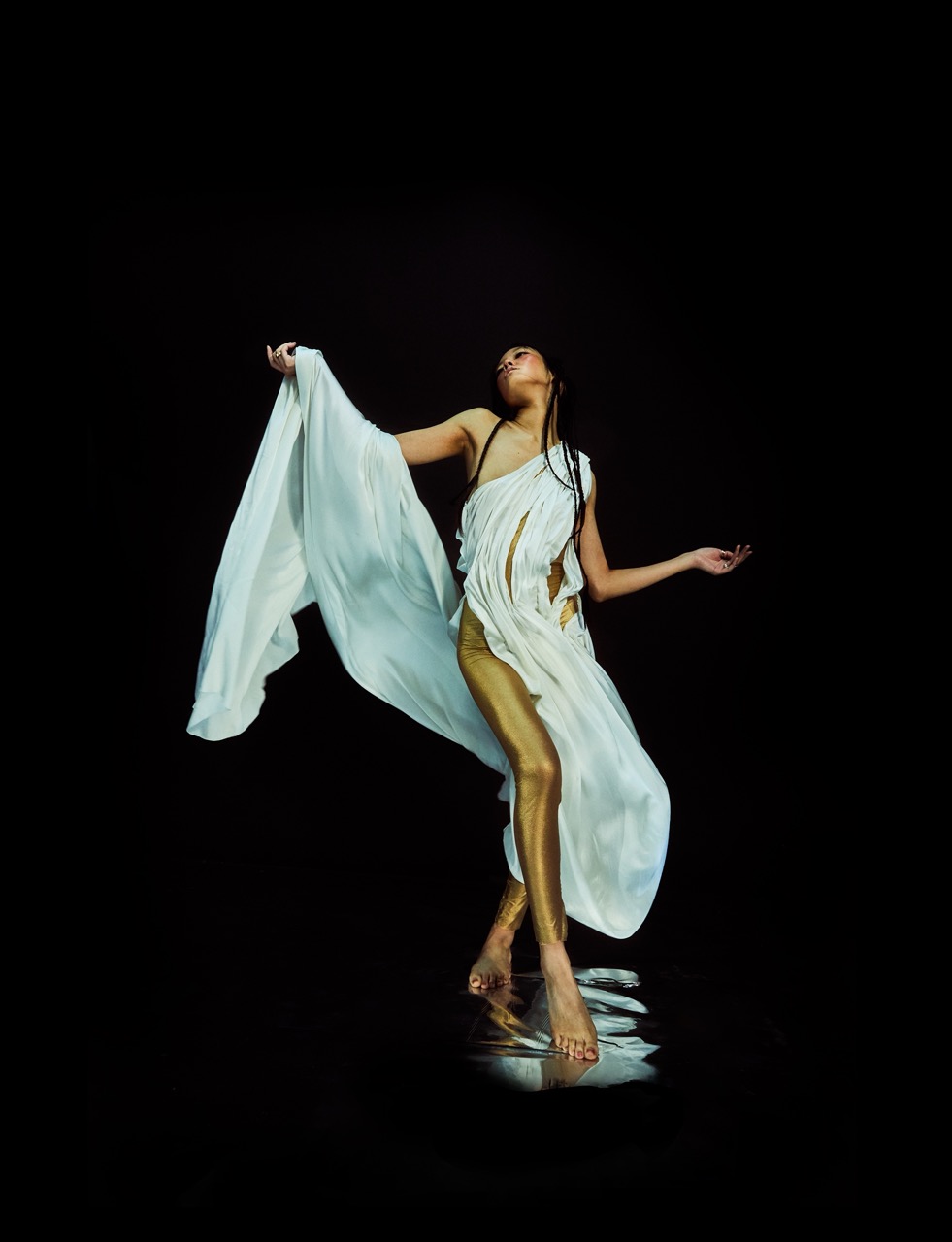
The sacred and the sensual have always been entwined — only shame has taught us to segregate them. Dimitra Petsa, the visionary behind DI PETSA, is here to guide us back to our bodies as sanctuaries, unshackling their eroticism from disgrace. Known for her unmistakable trompe l’oeil wet-look draping — which has graced the likes of Bella Hadid, FKA Twigs and Doja Cat, — the Athens-born artist and designer fuses flesh with fabric. Nakedness is accentuated, not concealed; the body becomes an eternal fountain of divinity as all its fluids turn into Holy Water. In a society where wetness is either over-sanitised or hyper-sexualised, Petsa reimagines it as something sanctified — tracing it back to our bond with the water element and the constant fluidity it represents. From sustainable textiles development to intricate references to Greek mythology, there are many puzzle pieces that come together to create a Di Petsa piece. Within this, she reminds us that dressing is a powerful ritual of self-love, as we adorn and celebrate the skin that protects us.
I’d love to dive into your first brushes with art. Fashion, poetry, and performance come together so harmoniously in your work. How did they enter your life?
I grew up very close to my grandmother, who was a tailoring teacher and a seamstress. I learned to sew at a young age, and I always knew fashion was my calling. However, I didn’t just want to be someone with good technical ability; I wanted to bring an original vision. That’s why I studied performance arts first — and I still think of myself as a performance artist. I then did my master’s in womenswear at Central Saint Martins, and that’s when everything came together. Writing scripts was part of my performance course, but I eventually gravitated towards poetry, which I’m now most comfortable with. That’s when I created the poetry book Wetness, which relates back to fashion and intimacy. To me, fashion is the most intimate form of art, as there is no other art form that you wear on your body — it’s so close to you.
It’s also the intimacy of how everyone wears it differently —
— and they make it their own.
Exactly. Your iconic wetness look came from an urge to accept the body and all its fluids. How has this idea evolved since the inception of Di Petsa?
Yeah, the bodily fluid aspect was more prominent in the earlier collections, but it’s still present throughout. It’s in the details. Bodily fluids are something I always carry with me, not just because of the brand’s roots, but because it’s something that still interests me today. The fact that we produce bodily fluids — that we are wet — shows that we come from water.
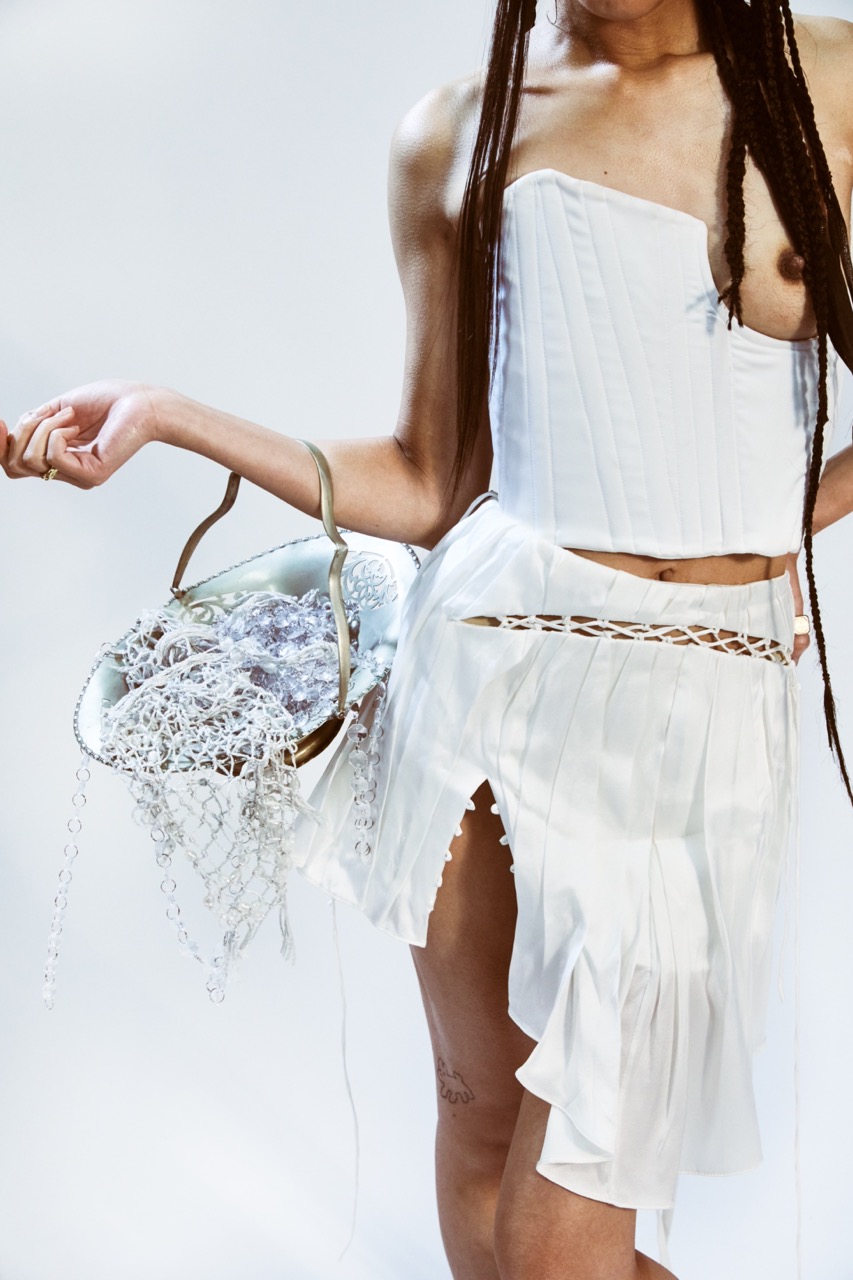
That’s such a beautiful concept. I’m also curious how you experienced growing up in Greece, creatively. Was moving to London a big contrast for you?
I moved to England when I was 18 and have been here for 11 years. But I still go back to Athens a lot. I was doing the more expressive performances in London — especially five or six years ago, where we had women gargling water and being naked. I think I wouldn’t have been comfortable executing that vision of a wet woman in Greece at the time. The audience is different there. But I feel things are changing, and I’m actually considering doing more artistic projects in Athens as well.
Performance is also an integral part of a Di Petsa piece itself — I loved your quote that read “performance always comes before the garment”. What does that mean in your creative process?
When I design, I always imagine someone who becomes part of a performance. They’re not just wearing a beautiful dress — they are becoming something. Everything in life is a performance. When you put on a dress, it’s linking you to this idea that you are divine, and are connected to earth and water. I’m not one of those designers who will do a 90s reference or something. It’s about concept and art first, then design specifications.
What is your relationship to the sea and water as an element at large?
I am actually by the sea right now, in Greece. I grew up by a port in Athens, and I always feel very at home near the sea, or even lakes and rivers. I can’t explain it, but I’ve always had this strong connection to water. To me, it represents constant fluidity and transformation — water never takes one rigid shape. That’s also how I experience womanhood. We are malleable creatures in many ways. For example, during the menstrual cycle, I put on weight, I lose weight, my boobs go up two sizes, they deflate back. We’re constantly changing. It’s the same emotionally and psychologically — I might be crying one moment and the next I might feel very strong. I admire women who are comfortable with showing their emotions unfiltered, and I think society’s patriarchal notions force us to be rigid when we’re naturally fluid.
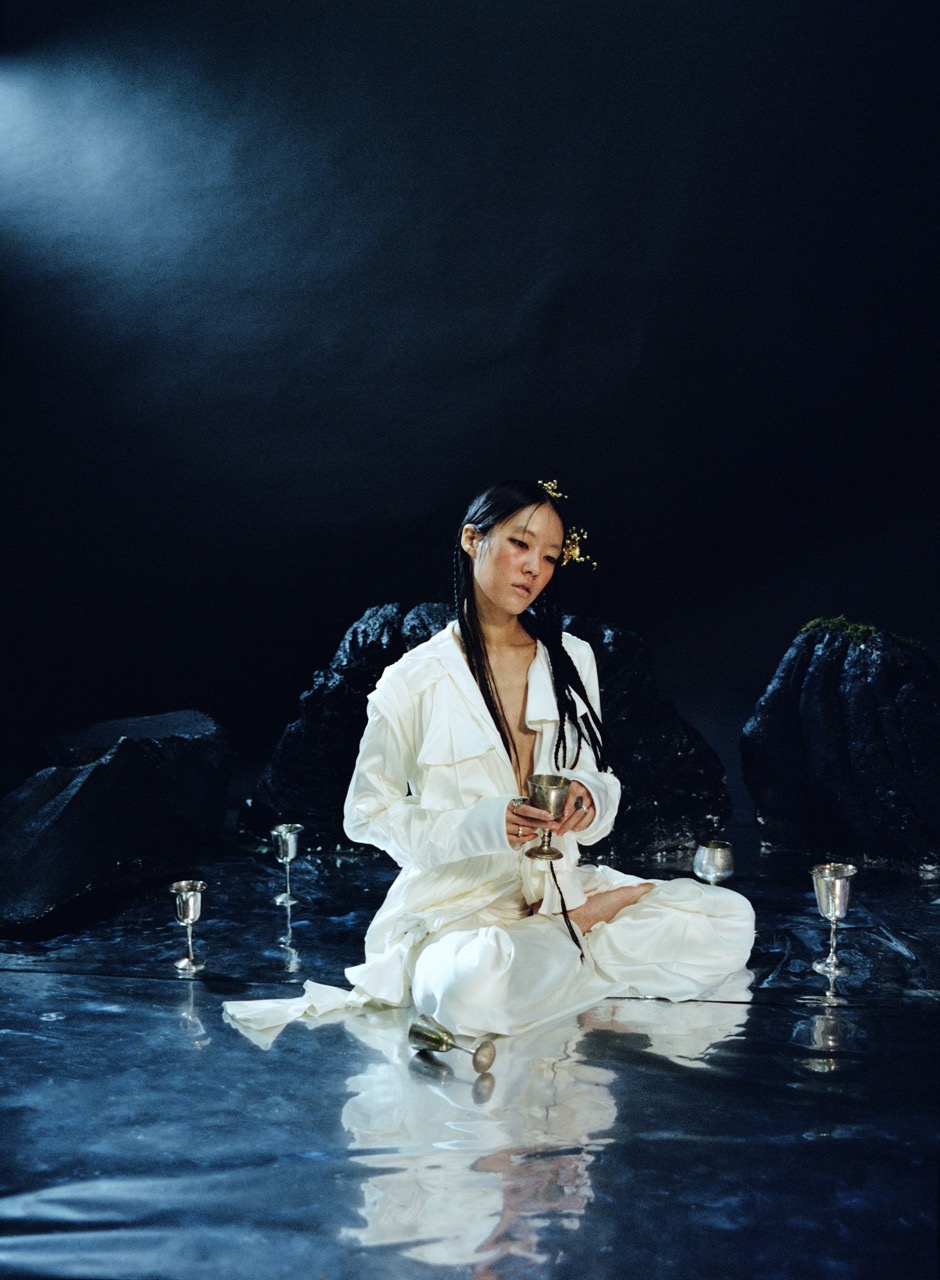
This resonates so much — the whole society caters to men’s 24-hour hormonal cycle, which really doesn’t consider how women’s bodies work. I also find it fascinating how our menstrual cycles can be synchronised with the phases of the moon, reflecting a sort of symbolic bond to the cyclicity of nature [the term menstruation actually comes from a Greek word mene, which means “moon”].
Exactly. The moon is something I often reference in my work and poetry. I feel a deep connection to the moon phases.
When it comes to your technical process, how does this notion of fluidity manifest itself? I understand you keep the details of the wet-look technique under wraps (and rightly so), but what key qualities do you prioritise in fabrics and design?
For me, it’s always been very important to create clothes that can fit whether you lose or gain weight. When you buy a couture gown, it’s usually something you have to strive to fit into — we’ve seen this trope in many movies. I never wanted that. I wanted to design clothes that follow the true state of a woman’s body, which is constantly changing. I also often think about how the fabrics feel rather than what they are. For example, if I want a piece to evoke a sense of safety and comfort, I use soft velvet and other bouncy fabrics that give me that cuddly feeling.
I’d also love to explore how mythology influences your work. What is it about mythology that captivates you?
Mythology was a big part of my upbringing. But in Greek mythology, there’s this warped, Orientalist transcription that misses a lot of the underlying facts. For example, the recurring theme of rape in Greek mythology reflects actual history — namely, the violent transition from a matriarchal to a patriarchal society. That wasn’t a smooth change. Iit was very aggressive and abrupt. Men were taking over temples via destruction and rape. Also, the mythology we know now often distorts the deeper, wider roots of female archetypes. Venus, for instance, who I reference a lot, wasn’t just the goddess of beauty and sex. Before the 12-god system, she was an all-encompassing goddess, almost like a Virgin Mary character. I’m interested in a feminist reading of ancient Greek mythology. To me, mythology is a way to find divinity or spirituality, something that was perhaps a bit more grounded in nature and in women.
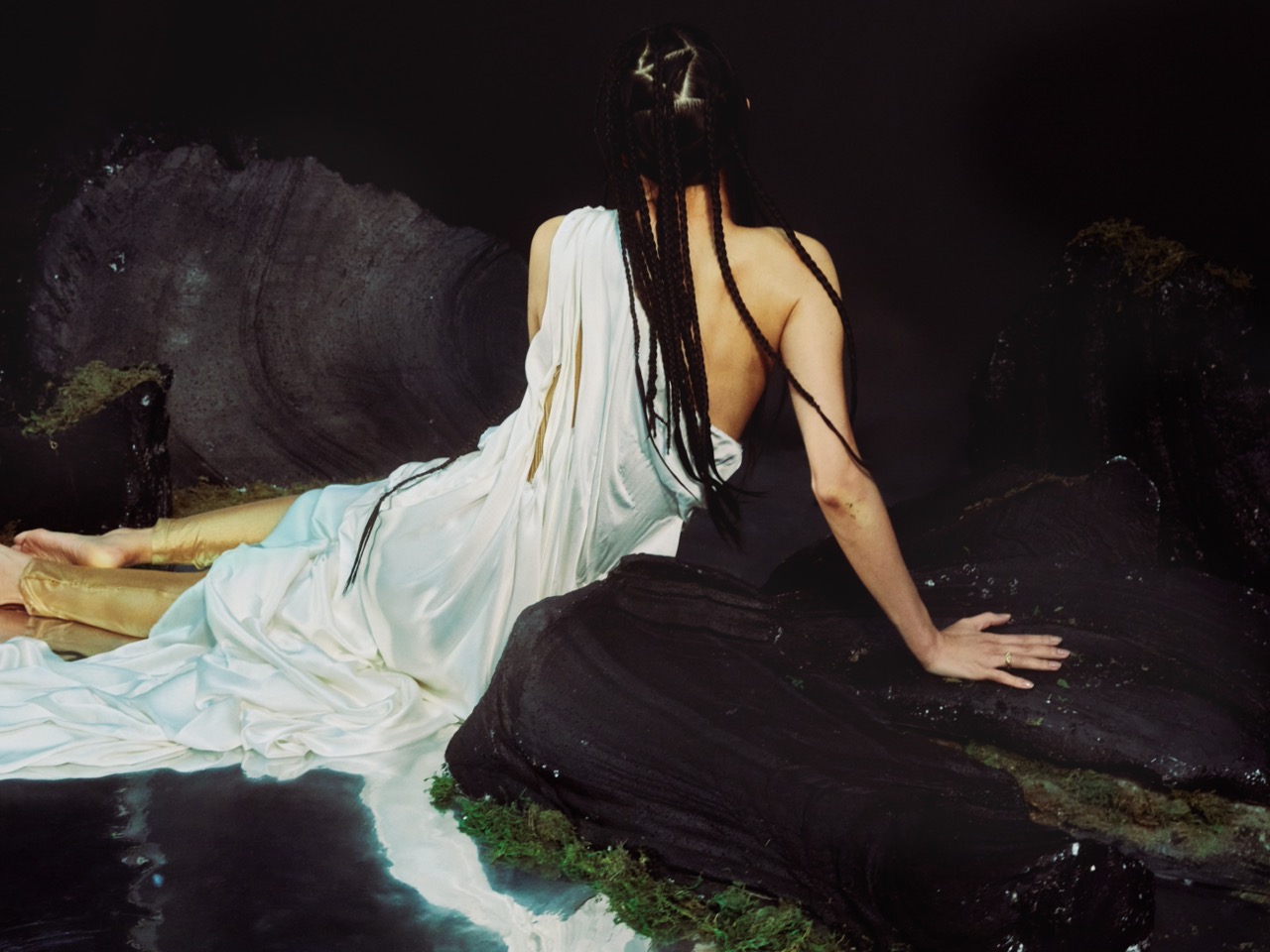
It’s insane how one-dimensional the current popular reading of Greek mythology is. There’s so much power in revisiting and challenging histories that we are told from perspectives that are often concealed.
I think all these things are kept alive by the people who continue to research it. Otherwise, we get stuck in what we’ve been told when we don’t know who the narrator of those stories is.
Let’s talk about The Body as Prayer. What was the inspiration behind the collection?
It was inspired by the way ancient Greek myth is integrated into contemporary Greek Orthodox religion. I combined my experiences from going to church and their link to ancient ceremonies. For example, some models carry the epitaph — a symbol with roots in Dionysian myths. The collection was about finding a different kind of spirituality through love. At the time, I had recently broken up with my partner of eight years. This collection explores loss and heartbreak — how through breaking and healing we can find a spiritual rebirth.
It’s like a painful process of rejuvenation. I also adore the title — what does The Body as Prayer represent to you?
It’s about connecting to the divine through your body and other people. When you fall in love and share intimacy with someone, that’s the closest we can get to touching God. Through your body you can pray to God — through pleasure, dance, or any form of bodily expression. Christianity as we know it, is very much about the head and the mind. But I think the root of spirituality is very much grounded in the body.
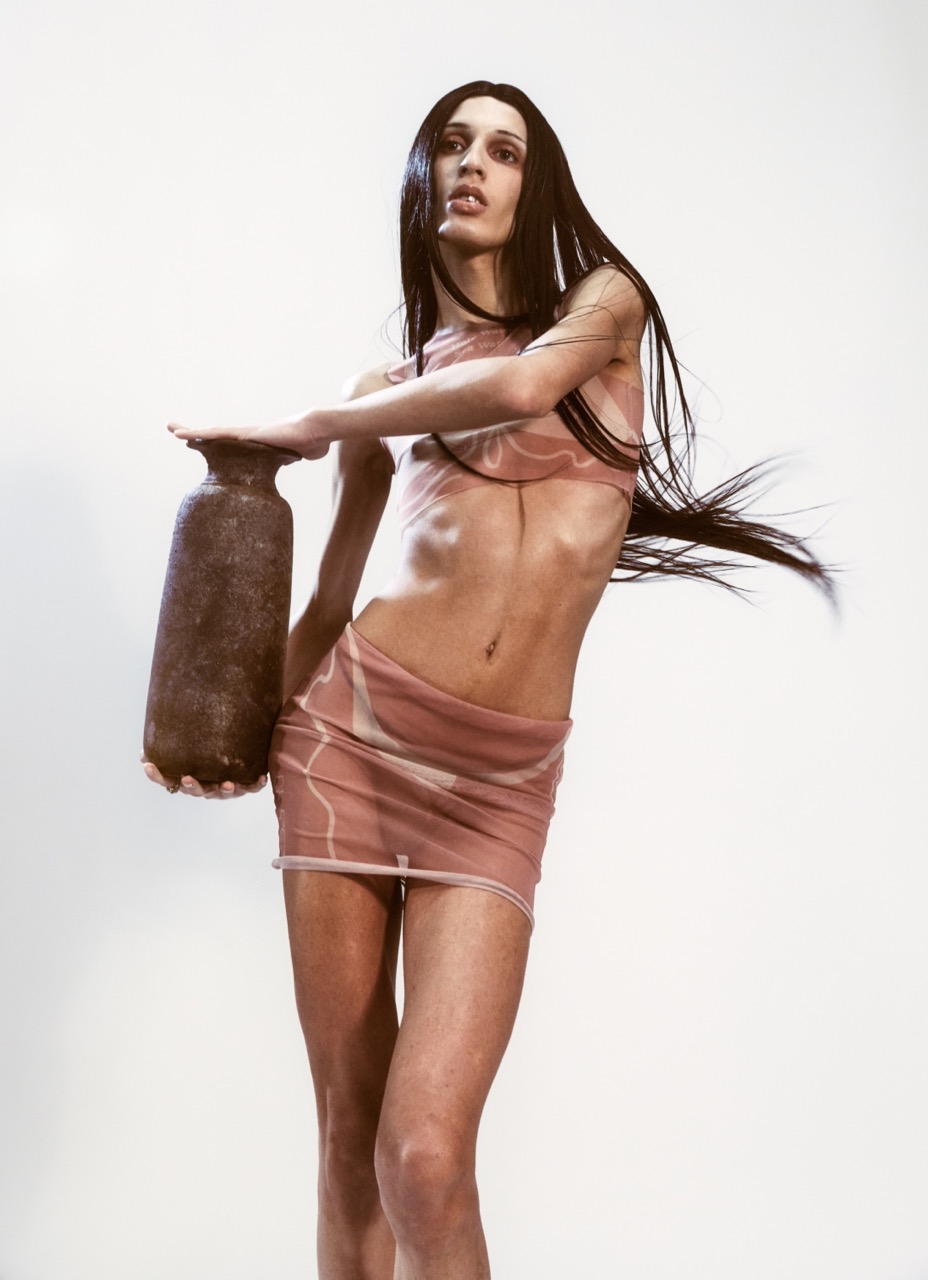
Much like intuition.
Exactly. It’s also like in therapy, one is encouraged to not always analyse emotions in a logical way, but to pay attention to physical feelings. To not intellectualise everything because it removes you from experiencing your body and reality.
This reminds me of what you’ve said about Venus. Perhaps she has always embodied love and sex, but over time we’ve diminished the values associated with these concepts. What was once viewed as an all-encompassing, sacred force has been reduced to something superficial and even vulgar. To me, it feels like you’re reviving that profound connection between love, the body, and divinity.
For sure. I believe that in many aspects. Even in fashion, sexy clothes are often seen as lowbrow compared to more structured, covered garments. It’s telling of how society views sex. But I believe that sex is a spiritual practice. Sexual energy is powerful — it literally creates life. I think art is also sexual energy because it’s a force that creates.
Building on that, I’m curious about your approach to bridalwear. I find myself conflicted with the institution of marriage and the industry it’s become, while still admiring the beauty in the ritual of celebration of love and its diverse interpretations. How have you balanced these perspectives in your experience?
I’m very inspired by my clients, who all have their own ideas of what being a bride means. A lot of them view it as a performance, a beautiful declaration of love — they don’t feel like it’s something they’re forced to do. I think they do it more for fun. I love that bridalwear is sustainable — you are going to cherish a wedding dress forever, and even pass it to future generations. I’m also interested in how women can have agency over how they want to show themselves. If a bride wants to show herself as being wet on her wedding day, I think that’s very modern. I’ve also had women who have bought a wedding dress to marry themselves.
That’s amazing. I love that!
I love that too. I think the idea of getting married is what you make it. It doesn’t have to just be this strictly patriarchal construct.
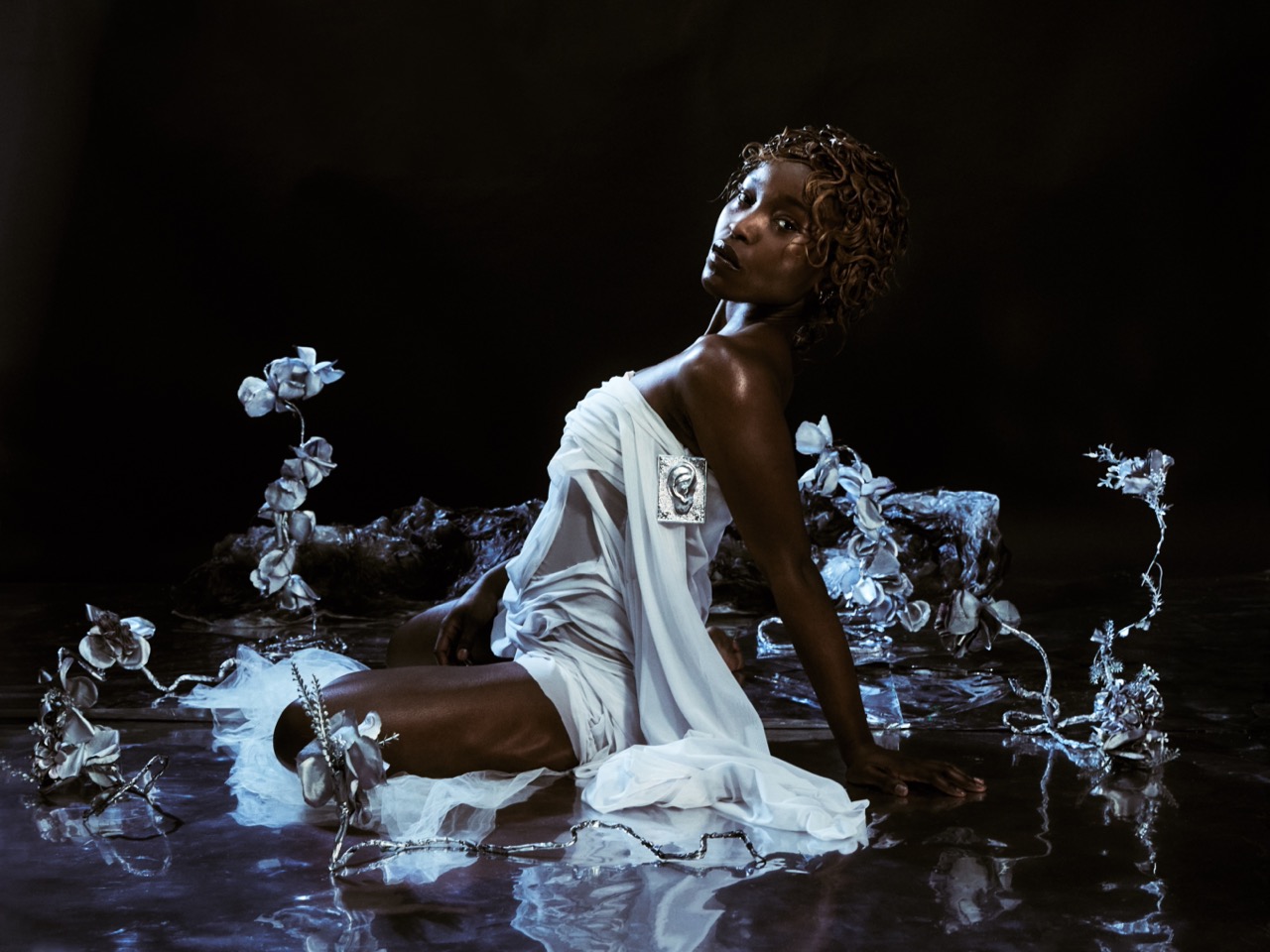
On a slightly different note, I’d love to talk about Mother Persephone — the meditation you developed. What has brought you towards its creation?
It’s a guided meditation about rebirth that takes you through a journey. You start as Persephone, travelling beyond the world and then returning. It’s about connecting with nature and its state of change. When I started my Full Moon Wetness workshops during Covid, I felt that the poetry and prompts I shared helped participants get in touch with themselves. More importantly, it helped them connect with a more elevated, divine and goddess-like version of themselves. I wanted to condense that experience into something you can access anytime.
When I think of your work, the word ‘sacred’ immediately comes to mind. It feels like your philosophy stands in stark contrast to the rigid, productivity-obsessed, male-dominated rat race around us. How do you preserve that sense of sacredness in your work and ethos while navigating such a fast-paced city and industry?
I think it has a lot to do with the energy you put out. People always say that we have the best backstage atmosphere because everyone is so nice and supportive, and there’s no drama. I’m very conscious about curating my teams in this way. It’s not just about someone’s portfolio; it’s about how it feels to work with them. It’s really about trusting my gut. At the same time, I do have a masculine side, which has helped me — especially in the beginning — in the sense of not sleeping and being very ‘action, action, action!’
It’s a balance — the masculine and the feminine exist in all of us as a spectrum, constantly shifting and intertwining. How do you see your work reflecting this interplay across different bodies and gender expressions?
For me, gender is kind of a performance in general. What I create definitely carries a lot of feminine energy, with an emphasis on malleability and womanhood. But I think anyone who is in touch with that energy can wear it and feel it’s right for them. For example, last season I designed menswear for the first time. It was interesting to explore how you design for women versus men, but it also made me more aware of the men in my life, and how they also contain this femininity.
Was there a difference you felt in designing for women and men?
In a way, there’s almost no difference — with both, I really think about the eroticism of the body, in how we bring forth our nakedness. With men, it’s especially interesting because they are often socialised to hide their emotions, be more rigid or stoic. Through my work, I want to help ease that, giving them more grace in movement and emotion.
Reflecting on your journey, how has your relationship to your own femininity and body transformed through your practice?
My work has always been personal, so each collection feels like a new challenge of growing up. As I take on more responsibility and build a business, and not just an art practice, I’ve learned to tap into different sides of my femininity. So it’s definitely evolved. I feel like I’m turning into more of a woman — whatever that means — while also holding onto the idea that you must protect and nurture your inner child. It’s like being constantly pregnant with your own self. I’m learning how to be a better mother to myself — and that means being stricter at times, but also more forgiving.
What are you manifesting for Di Petsa?
Right now, I’m working on a new book about Venus. It’s the first time I’m writing something like this, it’s more of a novel. And generally, I want to continue expanding the world of Di Petsa with more performances and multidisciplinary projects.
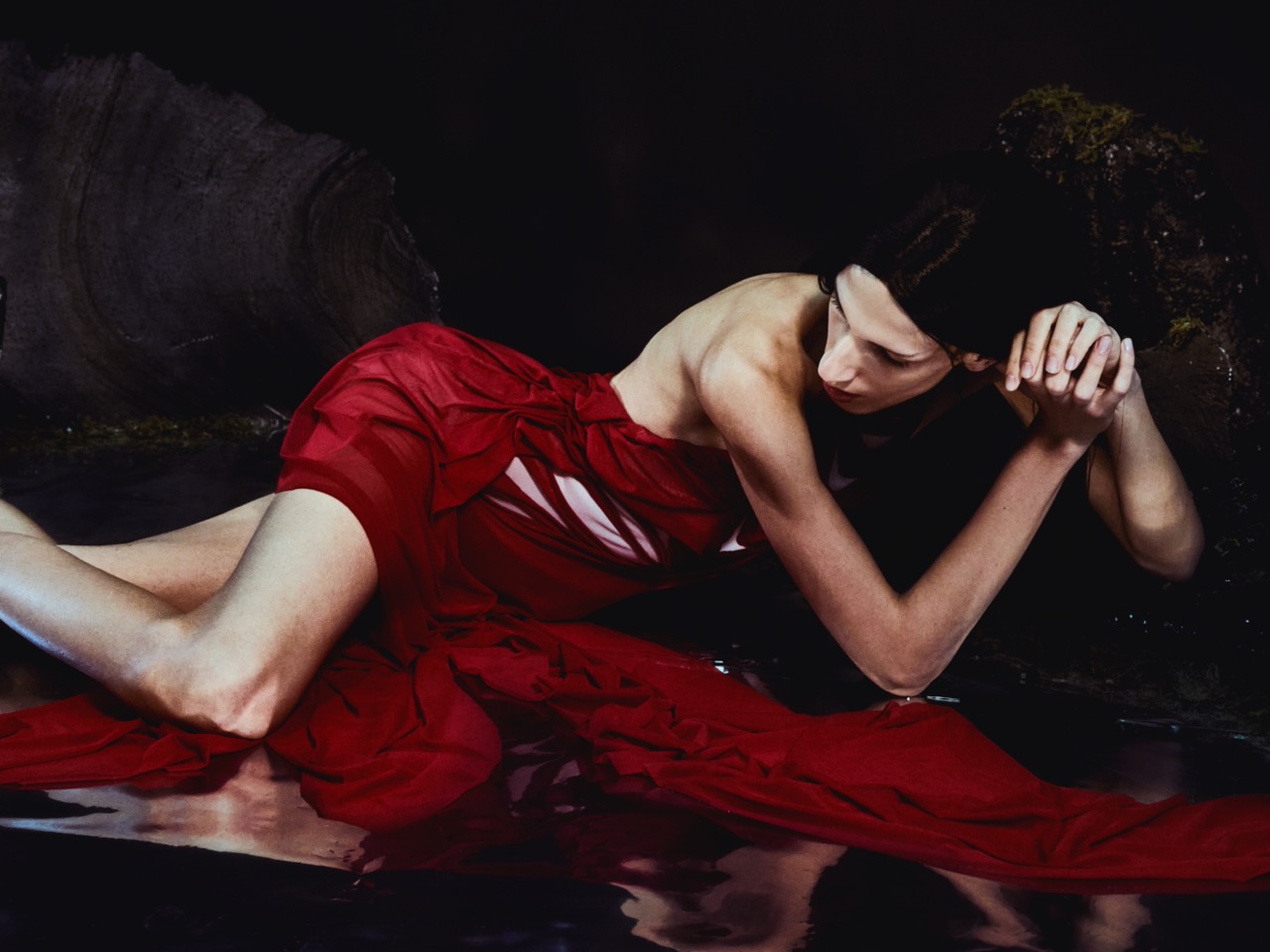
Words by EVITA SHRESTHA
Photography by NICOLE NGAI
Styling by KATE KIDNEY BISHOP
Hair by MASAYOSHI FUJITA
Make-up by SAINT MARETTO
Set design by JONQUIL LAWRENCE
Modelled by RIKO @ Neo Mgmt, TERPSICHORE @ Revolt Models, TIFFANIE @ Gee Small Faces
Casting by GEO LANGHAM
Photography assistance by LAURA BUTCHER
Styling assistance by KIARA MORRIS
Hair assistance by KEI KOSHIGOE
Make-up assistance by HANA FUKUDA
Special thank you to Purple PR
Notifications